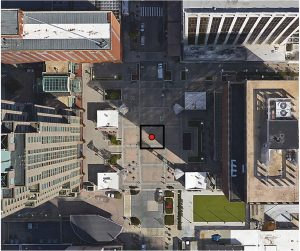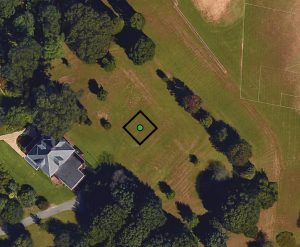City dwellers who are weary of the concrete jungle often seek out a bit of nature. Whether they visit an urban park or find a small green space, residents can gain a host of benefits. Research in environmental psychology shows that natural environments can help brighten moods, reduce stress and renew focus.
But can being surrounded by trees and dense vegetation affect a vigilant visitor’s sense of safety? The answer, according to a recent study, is that it depends on whether the green space is downtown between tall buildings or in a city park setting.
NC State University experts used turned to immersive virtual reality (IVR) to test perceptions of green enclosures. Researchers with the Center for Geospatial Analytics used a robot to capture 360-degree, high-resolution images of a downtown Raleigh plaza and of a city park, then manipulated the vegetation to create several different environments.

In the downtown plaza scenario, virtual visitors near tall buildings wanted to be surrounded by as much green vegetation as possible, says landscape architect Payam Tabrizian, an NC State doctoral student in the College of Design and lead author of an article about the research. The top-rated landscape design among the 90 testers was one with trees on all four sides in a medium-density arrangement.
“In an urban setting, being enclosed by vegetation feels restorative. It can serve as a shield from the urban environment and create a kind of refuge where people can sit and relax for a while,” says Tabrizian. “People preferred urban environments that were very green and being enclosed in vegetation didn’t seem to bother them that much.”
That wasn’t the case for visitors to virtual versions of Raleigh’s Fletcher Park.
“In the neighborhood park setting, people preferred the opposite in terms of vegetation density and arrangement,” Tabrizian says. “It seems that people have enough green surrounding them and want to know what’s happening around them. When you enclose them with vegetation, they don’t like it. They feel unsafe.”

While results varied slightly based on participants’ backgrounds and physical abilities, the fundamental need for safety was clear. “To a large extent, we’re hard wired to actually feel enclosure and to react as a matter of evolutionary survival,” Tabrizian says. “We tend to use environments that give us some protection but that we also have some control over.”
Follow-up studies are underway in the College of Natural Resources, incorporating new setting types, such as a Manhattan high-rise environment. And NC State and Clemson researchers are collaborating to study whether there are cultural differences in landscape preferences.
IVR techniques could come in handy for landscape designers to get feedback on new designs or improvements to existing parks and green areas.
“As landscape designers, the instinct is to want to make changes, but sometimes leaving things as they are may be best,” Tabrizian says. “This technology allows us to design a true experiment in which we control the variables, without ever planting or moving a tree.”
The article, “Exploring perceived restoration potential of urban green enclosure through immersive virtual environments,” appears in the Journal of Environmental Psychology.
Tabrizian’s co-authors, all from NC State, are Perver K. Baran, teaching associate professor in parks, recreation and tourism management; William R. Smith, associate professor of sociology; and Ross K. Meentemeyer, professor and director of the Center of Geospatial Analytics.
This post was originally published in NC State News.